Immerse yourself in Barcelona's vibrant flavors and uncover hidden culinary gems with our expert insider guides. Plan an unforgettable trip today!
Read more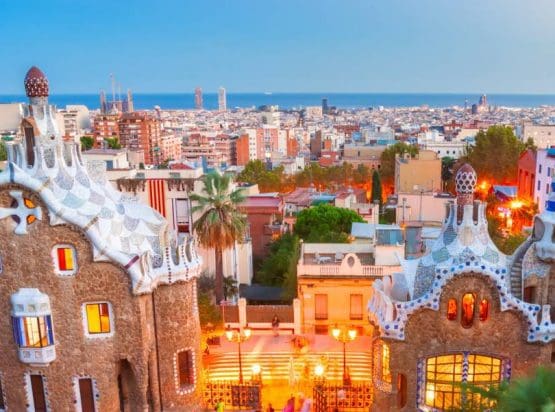
EXPLORE ALL OUR CATALUNYA WINE REGIONS GUIDE
Last updated: October 11, 2024
Stretching from the city of Blanes to the French border, the Costa Brava is one of Spain’s most alluring destinations. Much of the region is untamed, replete with splendid beaches, crystal clear water, Instagrammable coastal towns, rugged mountains, and verdant pine forests. Paradise, in other words. Yet there is seemingly little here to tempt oenophiles, despite your relative proximity to Catalunya’s vibrant capital Barcelona.
Of course, appearances can be deceiving. If you head north from Figueras, you’ll discover a sea of vineyards on the northern tip of the Costa Brava. Once known as DO Empordà-Costa Brava, the region has adopted the simpler moniker DO Empordà. It is one of Catalunya’s lesser-known regions, although quality has soared over the past decade. Traditionally, the focus was on small, family-owned cellars specializing in sweet wines made with local grapes like Cariñena and Garnacha. These days, it’s the young red wines garnering fame for their expressiveness and surprising finesse. Empordà, like much of Spain, is full of surprises.
Discover more about Spanish Wine
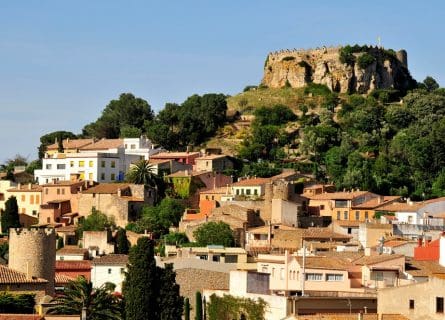
Wine has been made in the Costa Brava since the 5th century BC when Phoenicians first colonized this part of eastern Spain. However, the entire peninsula was under Roman control by 197 BC. The greatest moment for the people of Catalunya came in AD 74, when all adults and children living in Hispania were declared Roman citizens, with all the privileges and rights this granted. As a result, the use of Latin spread, and Roman culture became ingrained in their daily lives. This included the importance of wine growing as a source of great pleasure for rich and poor alike.
Yet after the Western Roman Empire collapsed in the 5th century, all hell broke loose. Marauding Franks, Vandals, and Visigoths all attempted to conquer Hispania in the wake of the Roman power vacuum, although the Moors finally emerged triumphant. In 711, the Muslim general Tariq landed a force of men at Gibraltar, quickly subjugating Andalucia and much of Spain and Portugal. Indeed, all of Catalunya found itself under Muslim domination by 718.
However, the situation would not last long; the Franks launched a series of counterattacks, retaking Barcelona in 801. By the late 10th century, the Casal de Barcelona ruled most of modern Catalunya and Roussillon, part of France today.
Catalunya Under Monarchical Union and Its Effects
In 1469, Fernando of Aragon married Isabel of Castile, uniting these two great monarchies. This state of affairs was intolerable for most Catalans, albeit the region maintained some autonomy. However, the wine industry was booming under the capable stewardship of monks and nuns from monasteries and nunneries that proliferated after the Moors were ejected in the Middle Ages.
Nevertheless, Catalan dreams of independence died a death after Felipe V emerged triumphant from the War of the Spanish Succession. The despotic king abolished the Generalitat (Catalan parliament) and banned the language from institutions.
But local industries were thriving and leaving Madrid for dust; textiles, cork production, leather, and paper became Catalunya’s key exports. So too, were the vineyards of Empordà on a roll, producing high-quality wines that locals consumed with relish. Only the advent of phylloxera spoiled the party, wiping out much of the region’s acreage. Sadly, many terraced vineyards were never replanted after a solution was found (regrafting European vines onto American rootstock), as they were too difficult and expensive to farm.
In the 20th century, history repeated itself. After Franco emerged victorious in the Spanish Civil War, Catalunya’s independence and free spirit were crushed; Franco abolished the Generalitat and outlawed teaching Catalan in schools. Fortunately, the transition to democracy after his death in 1975 saw Catalunya achieve more autonomy than ever since 1714. Meanwhile, a constant stream of investment has been revitalizing the region’s less outstanding DOs—Empordà included.
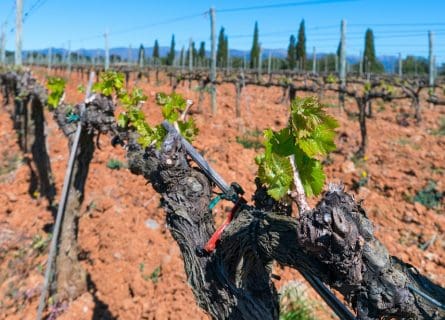
La Costa Brava, the rocky, rugged coastline along Spain’s northeastern shore, is far better known for its lovely seaside resorts and wave-lapped beaches than for its wines. Yet, on the border with Roussillon, is a very high-potential region, let down in the past by rustic equipment and poor winemaking. Still, nothing is second-rate about a benign Mediterranean climate and diverse terroir.
Indeed, the variety of soils here — limestone, sandy, volcanic, and clay-based — ensures that growers can cultivate many different grape varieties in the zone. In addition, the soils are mostly well-drained, albeit excessive fertility can be an issue in some sites, leading to undesirably high yields. The DO has more in common with the two adjacent French appellations of Banyuls and Côtes de Roussillon than any other Catalan vineyard.
A Blend of Natural Beauty and Unique Climatic
Nevertheless, the unbeatable combination of seascape and rural countryside makes Empordà one of Catalunya’s loveliest wine regions. The vines are planted at low altitudes (200 meters maximum) and are constantly caressed by the gentle breezes of the Mediterranean. Occasionally, they’re submitted to the harsher whims of the Tramuntana, a cold, northerly wind that sweeps down from the Pyrenees and prevents the region from getting too hot. As a result, nearly all the vines are staked for protection.
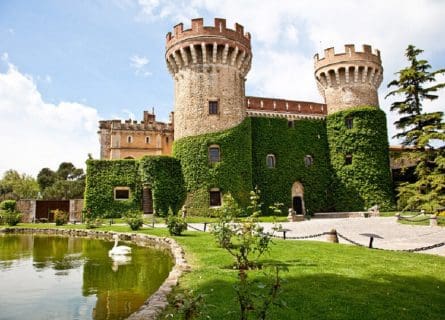
The northernmost of Catalunya’s DOs offers an expanding range of high-quality labels, often blends, that bear more than a passing resemblance to the wines of neighboring Roussillon. But in terms of making money, rosé has stolen a march with local retailers and restaurants.
Typically a blend of Garnacha and Carignan, Empordà pink has become a firm favorite in the holiday resorts of the Costa Brava. Pale in color but rich in flavor, they are made as gently as possible with minimal skin contact in the press before the juice is run off and subject to cool fermentation in stainless steel.
Rise of International Varieties
The best whites, meanwhile, tend to be judicious blends of Viura and Garnacha Blanca, with potent aromas of garrigue, citrus, and fennel. International varieties like Syrah and Merlot have also found their way into the vineyards of Empordà; the success stories generally outweigh the failures. However, the region’s biggest trump card is dry reds based on old bush vine Garnacha. The wines boast some of the Monstant potency, allied to Navarran Grenache’s freshness. They are rarely expensive.
Connoisseurs and critics once had little interest in this part of northern Spain. It’s understandable: Empordà traditionally produced heavy and rustic sweet red wines from raisened Garnacha Tinta berries, left to desiccate in the fall sun. Meanwhile, an age-old tradition saw fortified red and white wines stored in glass demijohns and left to oxidize in the sun – occasionally for several years. The result was a Sherry/Madeira hybrid and about as popular. Although late-harvest winemaking is essential to the area’s history, modern palates remain utterly apathetic to dessert wines, rare exceptions aside. For Empordà to survive, a drastic change was needed.
Thankfully, the region’s stakeholders took action in the early 2000s. They have invested significant amounts in modern viticultural techniques and equipment to save the reputation of their beloved DO. Some may decry this shift to modern styles as a betrayal of the region’s roots. But facts are facts: commercial necessity and sentiment rarely go hand in hand. For better or worse, Empordà has largely abandoned its birthright in favor of modernity. Its survival depended on it.
Discover the Allure of Grenache Blanc: Full-Bodied White Wine from Northeastern Spain. Experience the Richness of High Alcohol, Low Acidity Wines.
Find out moreDiscover Viura: Rioja's Prominent White Grape & Catalonia's Macabeo. Explore its versatility in exquisite wines. A must-read for wine enthusiasts.
Find out moreMuscat blanc is a white wine grape varietal popular in the Muscat d'Alsace, Moscato d'Asti and Beaumes-de-Venise regions.
Find out moreDiscover the irresistible allure of Cabernet Sauvignon—a worldwide favorite with robust, dark-bodied flavor. Unleash your wine journey today!
Find out moreCarignan is a red grape variety that grows mostly in Southern France, and is often used as a blending grape
Find out moreGarnacha: Spain's Red Gem. Akin to Pinot Noir, it bridges terroir and winemaking, crafting captivating expressions.
Find out moreMerlot is the most cultivated grape in Bordeaux and closely related to Cabernet Franc
Find out moreSyrah is dark-skinned and perhaps the most underrated of the 'noble' red grape varieties.
Find out moreDiscover Tempranillo: Spain's iconic red grape. From Ribera del Duero to Toro, it yields concentrated wines. Explore its synonyms and unleash its prowess.
Find out moreDining out in Catalunya is the highlight of any visit. The region is blessed with abundant exceptional produce, while the coast provides every type of fresh fish imaginable. One of our favorite dishes is Arroz a la Catalana: a local version of paella, cooked in an earthenware pot without saffron. Arroz Negre also cannot be missed – you’d never believe that rice cooked in cuttlefish ink could taste so good! There is also the gastronomic treat known as tapas: bite-sized morsels of food sold in almost every bar and cafe in Spain. A local delicacy is Truita de Botifarra: sausage omelet, a Catalan take on the iconic tortilla.
Guide to Catalan Gastronomy: Read more

Immerse yourself in Barcelona's vibrant flavors and uncover hidden culinary gems with our expert insider guides. Plan an unforgettable trip today!
Read more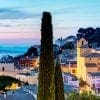
Immerse yourself in Begur's vibrant flavors and uncover hidden culinary gems with our expert insider guides. Plan an unforgettable trip today!
Read more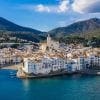
Immerse yourself in Cadaquès's vibrant flavors and uncover hidden culinary gems with our expert insider guides. Plan an unforgettable trip today!
Read more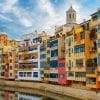
Immerse yourself in Girona's vibrant flavors and uncover hidden culinary gems with our expert insider guides. Plan an unforgettable trip today!
Read more
Immerse yourself in Sitges's vibrant flavors and uncover hidden culinary gems with our expert insider guides. Plan an unforgettable trip today!
Read moreIf you would like us to customize an exclusive luxury tour, contact us and let us know your travel plans. We offer luxury food and wine tours for private groups of a mininium two guests. In addition, all of our private, chauffeured tours are available year-round upon request.

